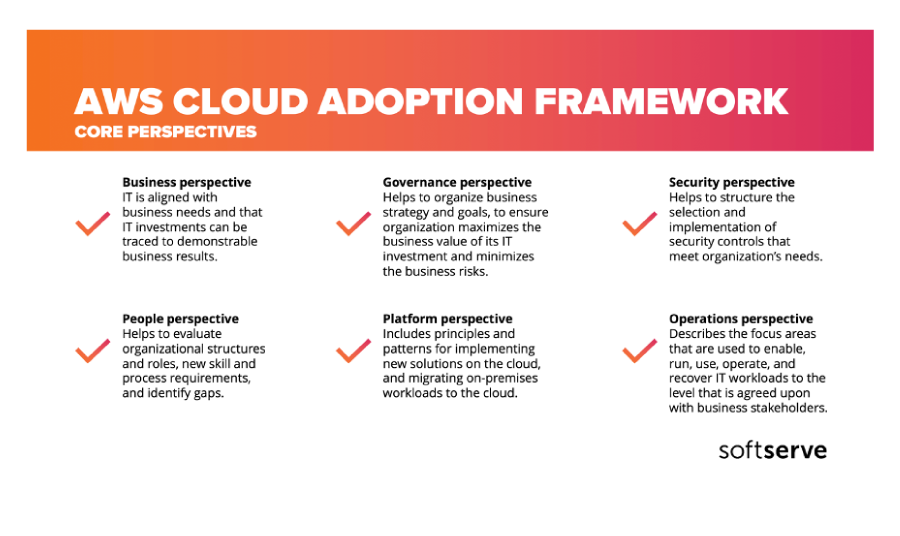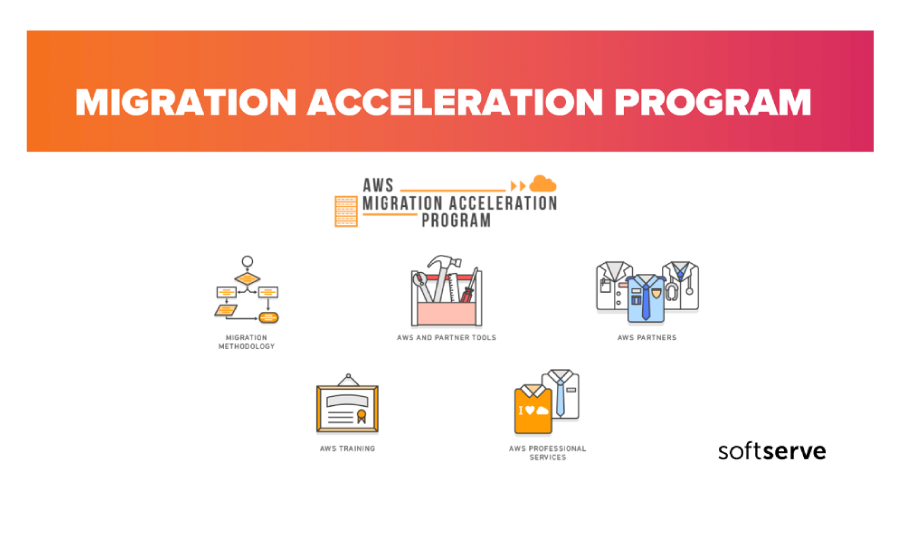
From On-Premises to the Cloud: Exploring AWS Migration Strategies and Benefits
In today’s evolving marketplace, even traditionally conservative companies are recognizing the necessity and advantages of running workloads in the cloud. This blog series will explore the differences between running IT in the cloud and on-premises.
Cloud enables business owners to accurately measure and estimate the resources required to run specific business workloads and assess their effectiveness. Relying solely on an on-premises infrastructure makes such estimates extremely difficult, if not impossible, to achieve.

Some companies remain resistant to migration due to security concerns. However, in reality, regulatory compliance is typically not an issue, as cloud infrastructure is already compliant with standards such as PCI DSS, HIPAA, and others.
When preparing to migrate, enterprises often face numerous questions, including:
- How to build infrastructure in the cloud
- How to effectively utilize cloud services
- How to align business processes with cloud potential
- How to build efficient processes
- What other companies are doing
- How to define CI/CD
- How to define DevOps
AWS offers several solutions that clarify and simplify the enterprise migration process. These include guidelines and frameworks to help businesses adopt new organizational structures and optimize resource utilization in the cloud.
We’ll provide a brief overview here.
AWS Cloud Adoption Framework (CAF) outlines organizational cloud transformation from multiple perspectives, including business, governance, security, people, platform, and operations

These AWS cloud frameworks help prepare organizations for the cloud from both a technical and business perspective. After applying the AWS CAF, companies receive an Action Plan outlining the required steps for each framework to ensure they are ready to move to the cloud.
The AWS CAF addresses most of the questions customers have about cloud transformation while also identifying the necessary skill sets for success in the AWS Cloud.
The AWS Migration Acceleration Program (MAP) enables companies to make the migration process secure and effective by following best practices through consultations, training programs, and service credits. AWS MAP helps companies optimize their business and implement innovations using existing resources, rather than maintaining and supporting legacy approaches.

Migration Acceleration Program consist of three phases:
- Migration Readiness Assessment – Evaluates the readiness of the client organization for cloud migration. This evaluation is based on the Cloud Adoption Framework. During this step, several actions may be performed, such as adopting internal processes and improving the skills of engineers.
- Migration Planning and Mobilization – Involves planning for the migration itself, which may include consultations with an AWS Migration Partner. The partner provides best practices and guidelines based on the customer’s architecture and migration experience.
- Migration – Focuses on the execution of the migration itself.
While migrating to AWS, customers can choose from the AWS 7 R’s migration strategies:
- Rehosting
- Replatforming
- Repurchasing
- Refactoring
- Retire
- Retain
- Relocate
These strategies help businesses migrate to AWS from on-premises environments while maximizing the cloud migration benefits.
We will cover and describe these migration strategies in our next post on migration.
If you have questions about your cloud migration journey or need guidance, contact SoftServe for expert support.
Start a conversation with us
